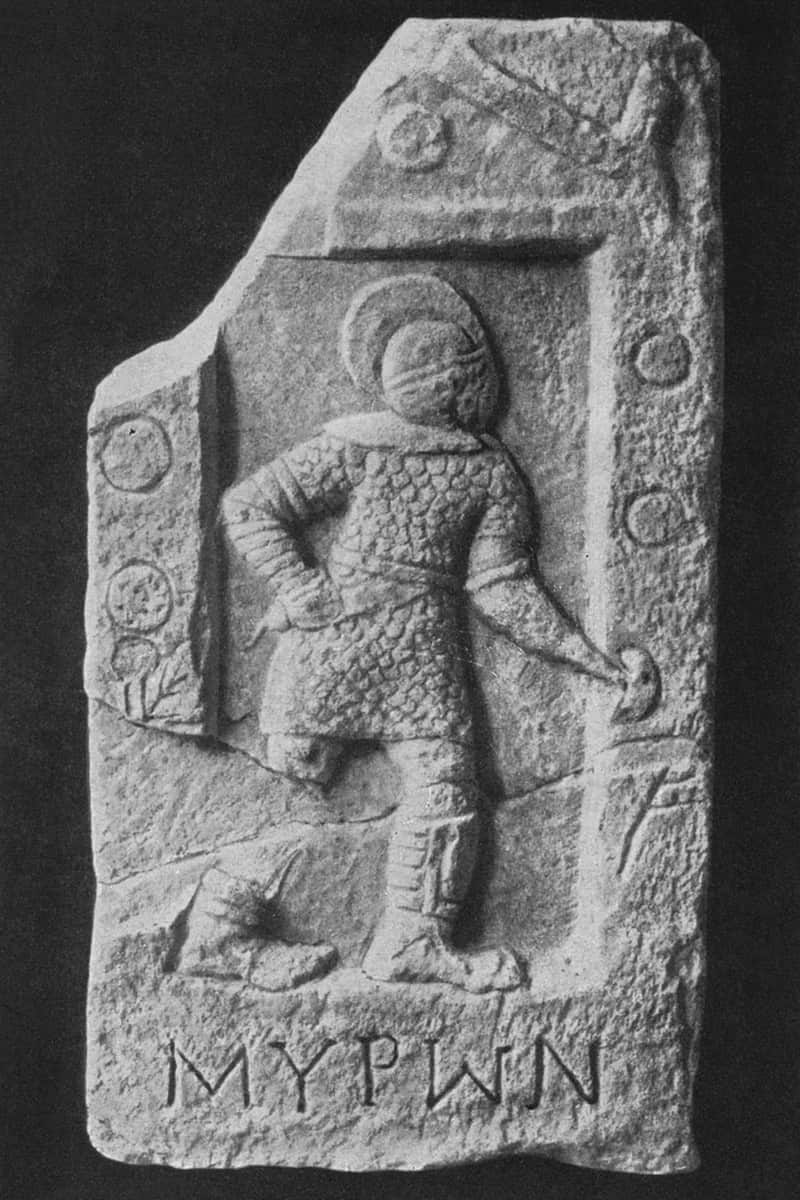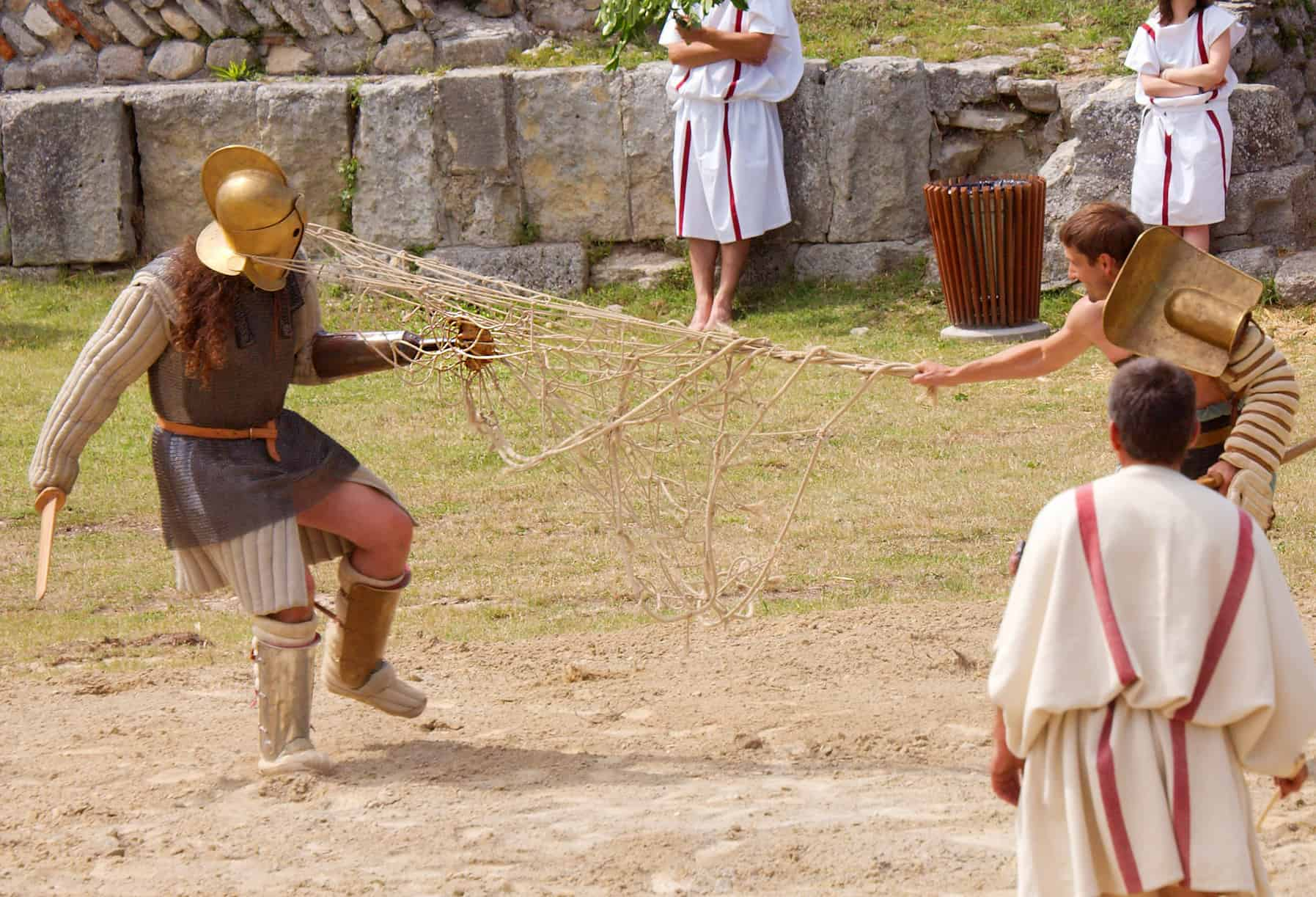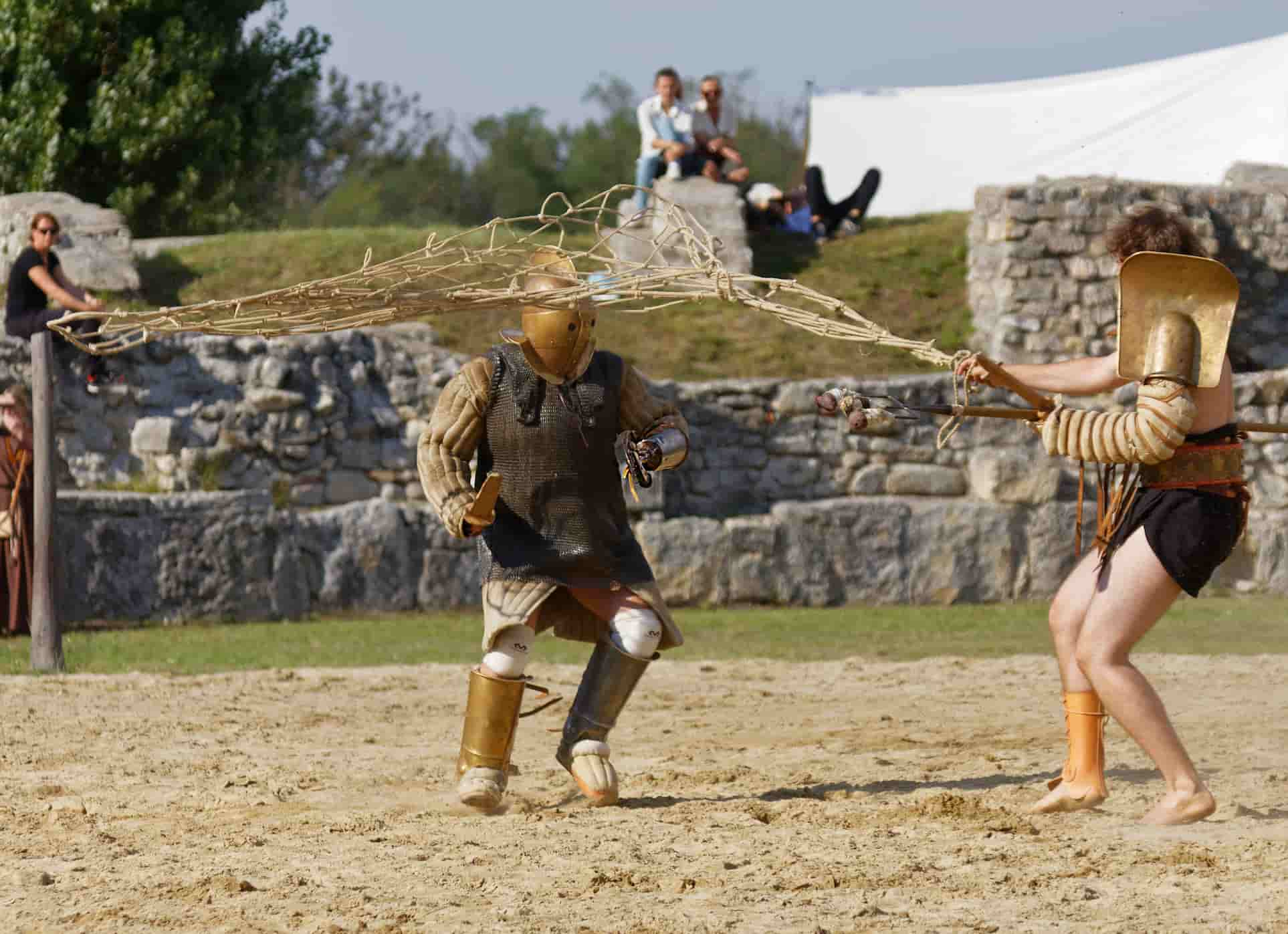A Scissor is a sort of Roman gladiator known as a “slasher” in Latin. The thing with the Scissor gladiator is that, unlike other gladiator types, no one knows for sure what they look like; however, there are some clues and theories. They are also believed to be called Arbelas, also a gladiator class. In other sources, this rare gladiator is linked to Dimachaerus.
The scissor (pl. Scissores, literally: the one who cuts)
Origin of the Scissor Gladiator

One certain inscription from the 1st century BC describes a gladiator called a Scissor. According to this description, some historians link Scissor to a specific gladiator seen in gladiator reliefs. Yet, this identification is not conclusive.
Since the word “Scissor” wasn’t used again after the 1st century BC for any gladiator types, it’s safe to assume that these gladiators became extinct or were rebranded as Arbelas.
The Greek word for “shoe repairer’s knife,” “Arbelos,” inspired the name of this gladiator and there are six known ancient images of Arbelas.
However, Scissor might also be an evolution of Secutor (who was the evolution of Murmillo) that appeared as early as the 1st century. Because, just like Secutor, he bore the name “anti-Retiarius” and shared the same unique ocrea greaves and the same helmet.
What Gear Did Scissor Use?
Similar to Murmillo (a heavily armored gladiator with a fish crest), the Scissor gladiator also utilized heavy armor. This fighter always entered the arena well-armed. He was armed with a gladius, a small, iconic Roman sword, and a mezzaluna in his other arm. Therefore, he was not armed with the Roman Scutum shield, unlike most other gladiators.
The description of Scissor comes from an assumed gladiator depicted in some reliefs.
Scissor’s Unique Weapon

On his left arm, Scissor had what looked like a semicircular chopping blade (like a mezzaluna) connected to the end of a metal tube attached to his forearm. Since there are no known surviving instances of this strange steel tube weapon, all descriptions must rely on conjecture.
For better control and grip, the gladiator probably had a grip inside the truncated tube, like the one on an Indian Katar or Pata. It’s likely that both the outside and inner surfaces of its blade were honed, making it effective for both thrusting and parrying. The weapon’s primary use was to block the Retiarius’ net and trident, but it also had attacking potential.
Even a small contact with this crescent-shaped blade might inflict great injury; therefore, the gladiator could use his shielded arm to parry strikes and immediately respond.
His Armor

- Helmet: A full-face helmet shielded Scissor, while leaving two small openings for the eye slits—just barely enough room for his eyes. The Secutor, a later version of Murmillo, wore the same helmet.
- Chest: Scissor’s upper body, from the waist down to the knees, was protected by scale or chainmail armor. He was well protected by this lorica squamata or lorica hamata.
- Arms: On the arm where he brandished the weapon, Scissor wore an arm guard (the lorica manica).
- Legs: In both legs, two protective greaves (ocrea or shin guards) also reached the knees.
Opponents of Scissor
Some eastern Mediterranean reliefs feature the Scissor gladiator in combat, either with a retiarius or another scissor (or arbelas).
Retiarius was a deadly enemy to Murmillo, whose fishing net often attached to the iconic fish crest of his helmet with ease.
But Scissor used his chopping blade to deflect this net, while Secutor (Murmillo 2.0) fought against Retiarius without a fish crest to balance the odds.


